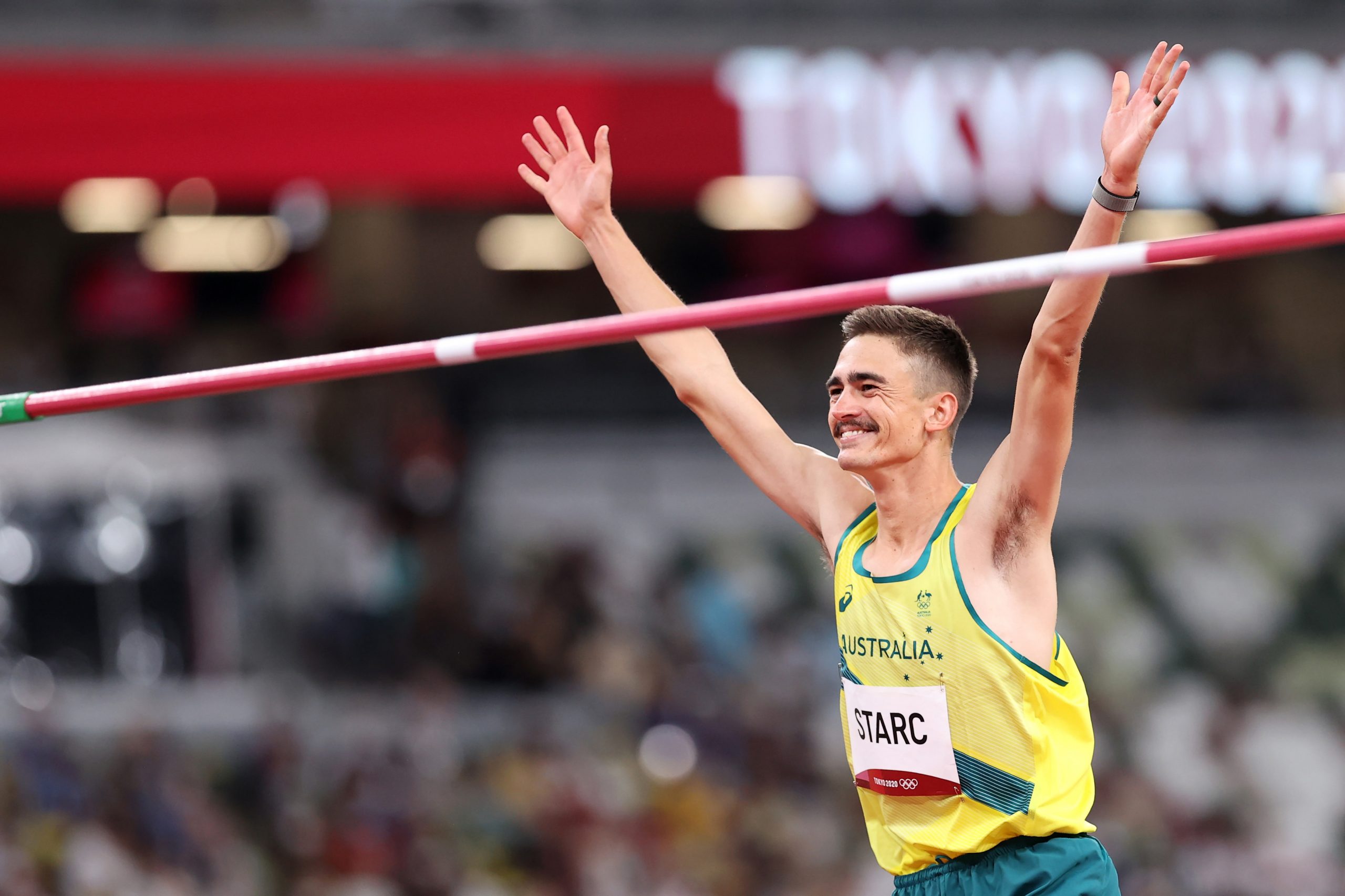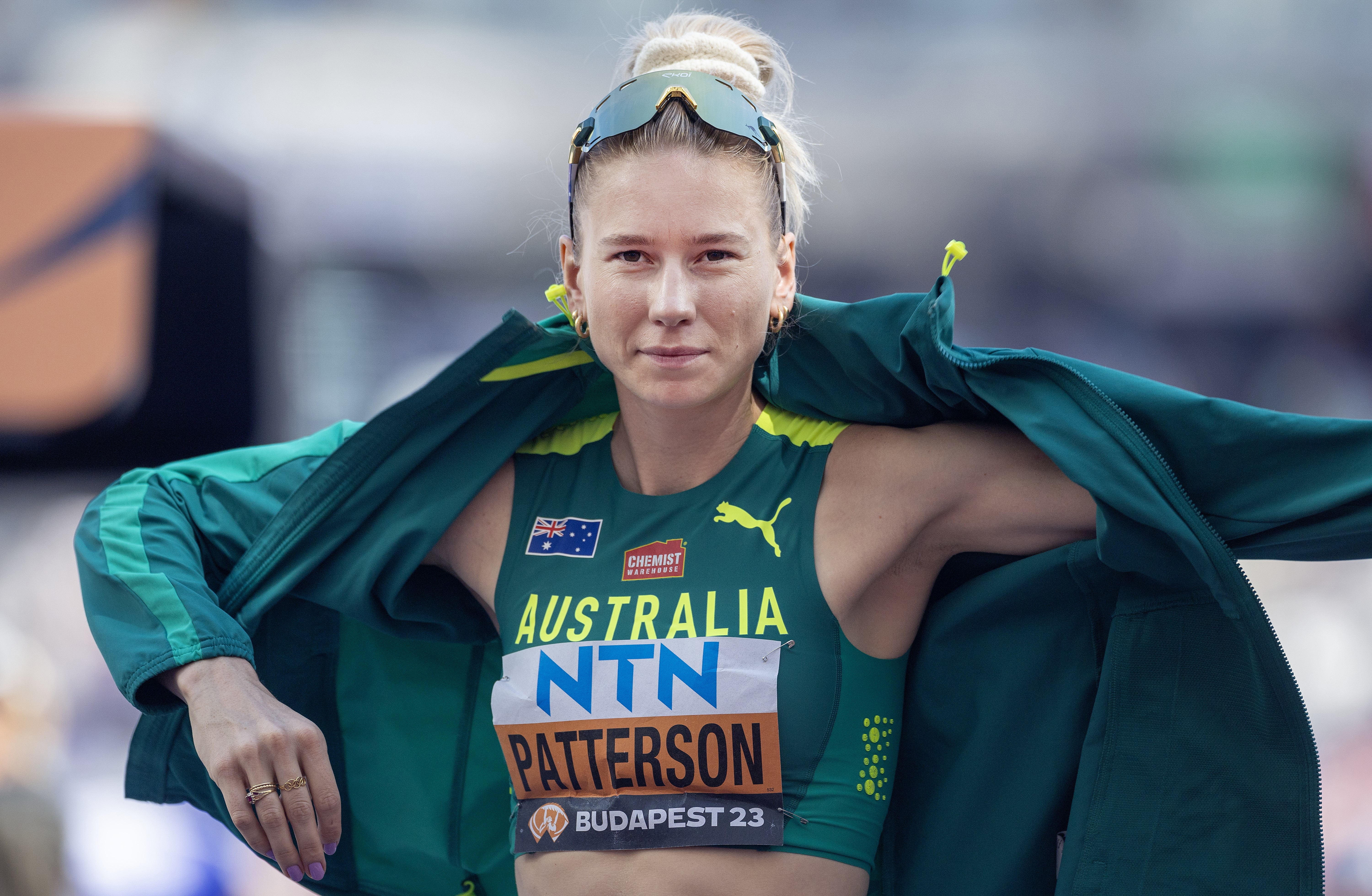Two of Australia's top track and field athletes and their coach have hit out over repeatedly being booted from their training facility at Sydney Olympic Park to make way for Little Athletics, school competition and NRL clubs.
High jumpers Eleanor Patterson, a world champion in her event, two-time Olympian Brandon Starc and their coach, Alex Stewart, say they've often had to lug themselves out to Narrabeen, Bankstown and Penrith over many years due to being shoved out of their main training venue.
Stewart, Patterson and Starc will be flying out to Japan this week, which is largely due to their fight for training space in Sydney.
READ MORE: Rugby league cult hero Terry Hill dies suddenly
GALLERY: The moment that cemented Hill as a cult hero
READ MORE: Freak accident that sparked driver feeding frenzy
Patterson and Starc, who are genuine Paris Games medal shots, will be training and competing out of Japan for the next month, and are looking forward to not being hindered by facility dramas.
The star athletes and their coach have called for a venue to be built in Sydney that's dedicated purely to elite track and field, heaping pressure on various bodies to take action three months out from the Paris Olympics.
The world-class squad, whose main training location is the Sydney Olympic Park athletics warm-up venue on Edwin Flack Avenue, also made it clear that Australian athletics broadly, not just its own training group, was facing a facility crisis.
In a statement provided to Wide World of Sports, Athletics Australia (AA) said it had "long advocated" for better venue access for elite track and field athletes and described the situation as a "great shame".
"It's not right that we don't have a facility that's available for elites only," Stewart told media at the athletics warm-up venue on Wednesday.
"The one thing these guys need is to be able to turn up every day and have a facility to be able to do the training they need to do, but they don't have it.
"The money needs to come from somewhere. My assumption of the reality is that we're not viewed as a big enough sport to warrant a facility. But we are the major Olympic sport, we are the core of the Olympic Games, and we deserve a facility that's exclusive to us. The reality is we're bumped for every other sport.
"We've been bumped out of this facility for NRL teams. For what purpose? There's football fields everywhere. We don't have tracks everywhere."
Among the athletes Stewart coaches in Sydney are Liz Hedding, a long jumper and sprinter, 19-year-old high jumper Erin Shaw and hurdler Jacob McCorry, who are all hoping to make their Olympic debut in Paris.
"Absolutely, it does take a toll on them [Stewart's athletes] … It takes a toll on me and so I'm always having to communicate with them [and say], 'Sorry guys, we can't train here today, we have to train somewhere else, we have to change the time, so you have to change your day around, which means maybe you have to change your week around'. It does take a toll and it's not one that they should have to bear."

The athletics warm-up venue is managed by the Sydney Olympic Park Authority.
In a senate submission lodged on May 26, 2023 for the inquiry into Australia's preparedness to host Commonwealth, Olympic and Paralympic Games, AA expressed its disappointment at track and field athletes having to find alternative training facilities, as well as a lack of Commonwealth, Olympic and Paralympic legacy venues.
"It's unfortunately become quite the norm [fighting for training space]. We're not super surprised with it," Starc said.
"It's still quite annoying. It doesn't seem like anything is really happening, which is a shame.
"You'd think high-performance sport is a big priority in Australia."
Patterson said it would be "incredible" to have a Sydney training venue dedicated entirely to elite athletics.
"Even if it was just a high jump set-up with a 60-metre run as well," Patterson said.
"It makes it hard and sometimes we end up travelling quite far to get access to a track during the day, and especially as the winter months come and it starts to get cold at night and you can't get access to a track until 5pm and it makes it hard to be training at your best, hence why we chase the summer sun [in the northern hemisphere].
"Nothing's come to fruition and it's all just talk right now."
The training group run by coach Andrew Murphy, which includes Rohan Browning, Australia's fastest man, also trains out of the athletics warm-up venue on Edwin Flack Avenue, but is forced to scramble for other options regularly.
"It just comes down to it being a dollar figure, seemingly," Stewart said.
"A, can we get the land to build the facility that we need to build? And then can we have the dollars to support all that?
"Talking with my colleagues, it seems to be an issue that's faced around the country in varying degrees, although it seems to be significantly worse in Sydney.
"There's been conversations with the New South Wales Institute of Sport [NSWIS], conversations with Athletics Australia [AA], conversations with the NSW Department of Sport [Office of Sport] and the [Australian] Sports Commission [ASC], but they've all seemingly fallen short.
"I probably could spend a lot of time and energy chasing this up and trying to find a solution to this myself, but it's not really my job."
Statements
New South Wales Institute of Sport: "NSWIS provides athletes with world-class support such as access to coaching, sports science and medicine, but access to the Sydney Olympic Park athletics venue is managed through Sydney Olympic Park Authority. There are two areas designated for high jump in the Sydney Olympic Park athletics precinct, but elite athletes cannot access either of those areas during school carnivals and at certain other times throughout the year. We believe having a school carnival operating while some of the world's best high jumpers are training in the arena would serve to inspire the next generation of athletes."
Athletics Australia: "The lack of access to these existing athletics facilities is a growing issue for our sport and especially our elite athletes, and this access is something that Athletics Australia has long advocated for, including in our Submission to the Inquiry into Australia's preparedness to host the Commonwealth, Olympic and Paralympic Games. The sport remains locked out of the nation's athletics venues for significant periods of time. Australian athletes are unable to train at facilities such as Sydney Olympic Park Athletics Centre to prepare to take on the world. Instead, they have to go overseas to train, not because the facilities are better, but because of policies and priorities locking them out. Considering that SOPAC is a legacy venue from the Games, it is a great shame that it is also a reason driving athletes away from their hometowns."
Sydney Olympic Park Athletic Centre: "Sydney Olympic Park Athletic Centre [SOPAC] is one of the busiest athletics facilities in Australia. SOPAC supports NSWIS and Athletics NSW along with a diverse range of events from school carnivals to international competitions. Although challenging, we strive to balance the needs of the community, students and athletes at all levels of the sport."

Leave a Reply
You must be logged in to post a comment.